Introduction
In the dynamic landscape of small business, achieving sustained growth demands a multifaceted approach that encompasses market understanding, strategic planning, financial acumen, customer engagement, and continuous evaluation. To thrive, small business owners must delve deeply into market research, leveraging both primary methods like surveys and focus groups, and advanced tools such as AI for data analysis. Strategic planning becomes the bedrock of growth, guided by clear, measurable goals and comprehensive SWOT analysis.
Robust financial management underpins this growth, requiring meticulous budgeting, forecasting, and the use of financial software to maintain accuracy and efficiency. Equally important is enhancing customer engagement through personalized interactions across multiple channels, ensuring exceptional customer service that fosters loyalty. Finally, the effectiveness of growth strategies hinges on the regular measurement and refinement of key performance indicators, ensuring alignment with evolving market trends and business objectives.
This integrated approach equips small businesses to navigate challenges, seize opportunities, and achieve long-term success.
Understanding Your Market
To thrive, small business owners must have a deep understanding of their intended audience. Conducting thorough market research helps identify customer needs, preferences, and purchasing behaviors. Primary research, which involves gathering data directly from sources, is invaluable. Surveys are one of the most common methods for small enterprises to collect primary information. They enable companies to comprehend consumer opinions, perceptions, attitudes, and behaviors by posing direct inquiries. Surveys can be conducted by mail, phone, or increasingly online, making it easier to gather timely data.
Additionally, focus groups offer qualitative insights into user experiences and preferences. By engaging a small, diverse group of individuals in discussion, organizations can uncover deeper motivations behind purchasing decisions. Analytics tools also play a crucial role in understanding industry trends and customer behavior. By examining information from diverse origins, companies can develop customized promotional tactics and product selections that connect with their audience.
Implementing AI solutions can further enhance market research efforts. As per recent findings, small enterprises are at the forefront of embracing AI technologies, with 42% of firms employing 10 or fewer staff utilizing AI to streamline duties such as client support and information analysis. These tools help streamline the data gathering process, allowing organizations to focus on interpreting insights and making informed decisions. By utilizing these research methods, small enterprise owners can guarantee they satisfy their clients' requirements and remain competitive in their market.
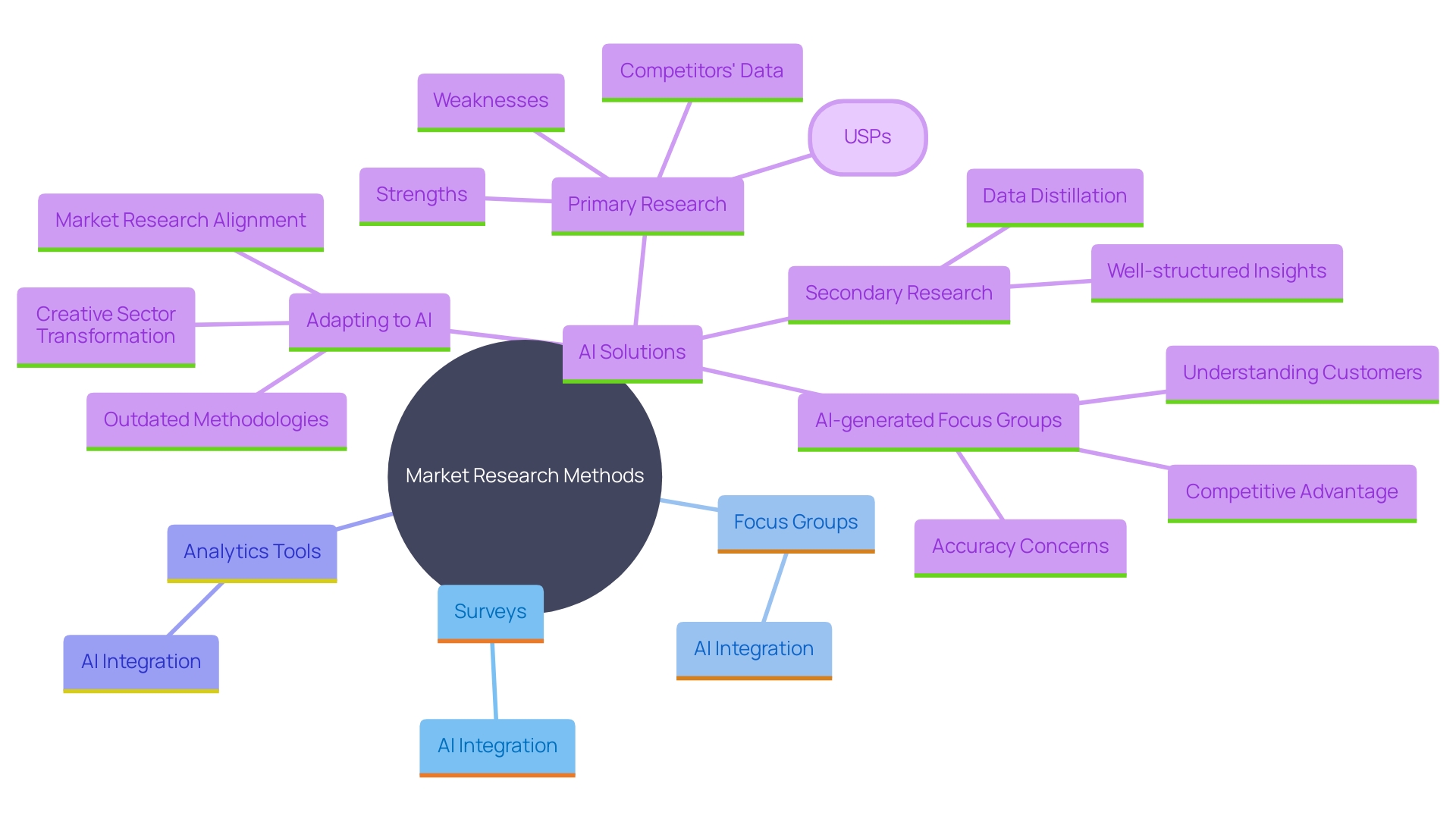
Strategic Planning for Growth
Effective growth strategies begin with robust strategic planning. Begin by establishing clear, measurable objectives that correspond with your vision. To achieve this, use a SWOT analysis—a strategic planning tool that identifies strengths, weaknesses, opportunities, and threats. Begin by gathering internal data such as financial statements, customer feedback, and employee reviews, along with external data like industry trends and news reports. This comprehensive approach allows small enterprises to understand their current position in the market, capitalize on their strengths, address weaknesses, and seize opportunities. By leveraging these insights, organizations can navigate challenges and optimize for growth, ensuring they are well-prepared to adapt to changing economic conditions.
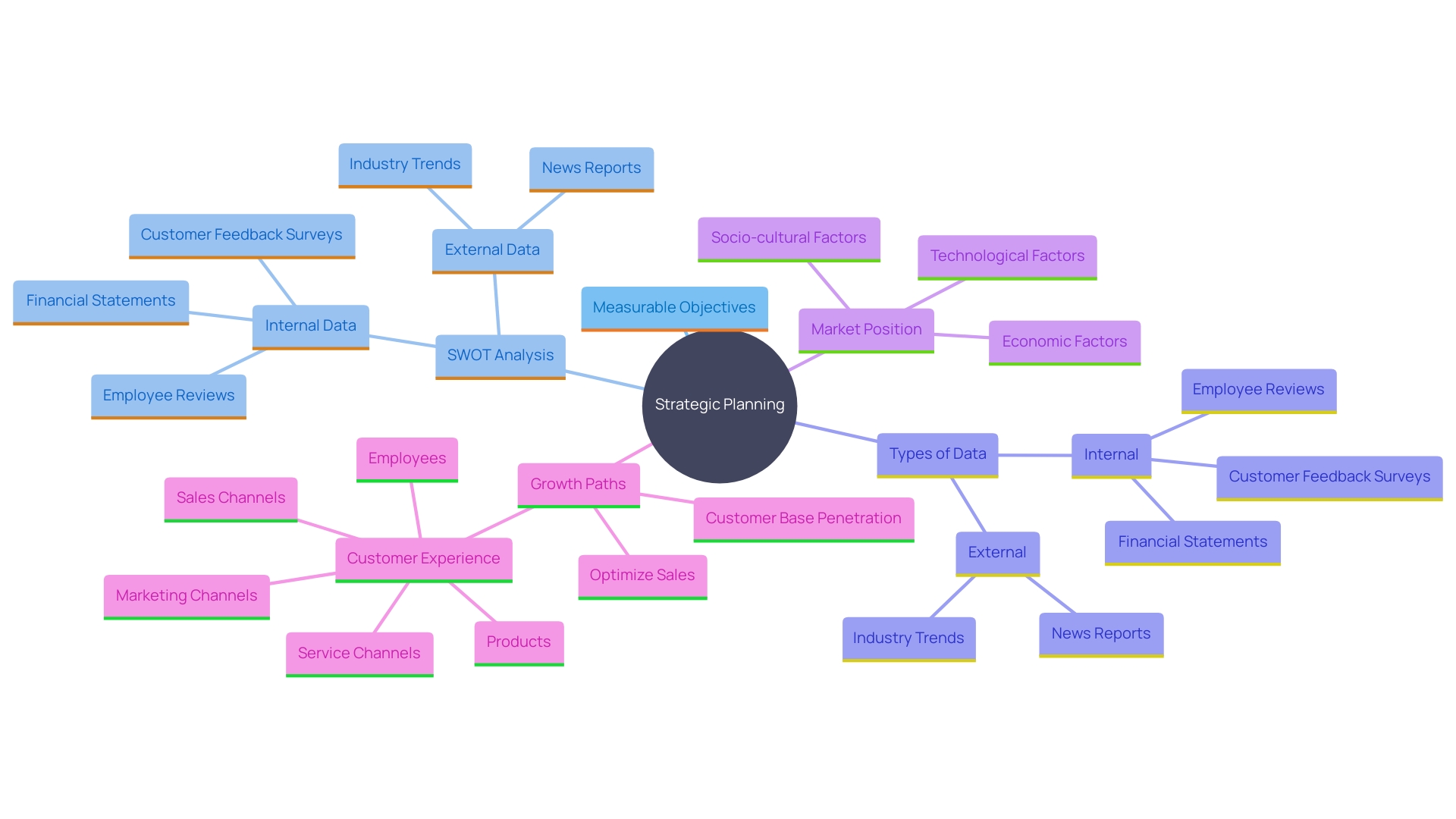
Optimizing Financial Management
Effective financial management is the cornerstone of small enterprise sustainability. Implementing rigorous budgeting and forecasting processes is essential for monitoring cash flow effectively. Utilize financial software to streamline accounting tasks, ensuring accuracy and efficiency. Regularly review key financial statements such as the balance sheet, income statement, and cash flow statement to identify trends and make informed decisions that enhance profitability.
A well-crafted financial plan serves as a reflection of your company’s goals, priorities, and anticipated income and expenses. Grasping cash flow is essential, as it entails monitoring the funds entering and exiting, ensuring that the organization can meet its costs and invest in expansion. As highlighted, separating professional and personal spending by opening a dedicated professional bank account can simplify tax filing and expense management.
Furthermore, using a budget template can streamline the budgeting process, offering a clear structure for arranging financial information and making strategic choices. Engaging in continuous learning, such as webinars on financial statement analysis, can further bolster your financial acumen. By maintaining a disciplined approach to financial management, small enterprise owners can ensure their venture’s long-term sustainability and success.
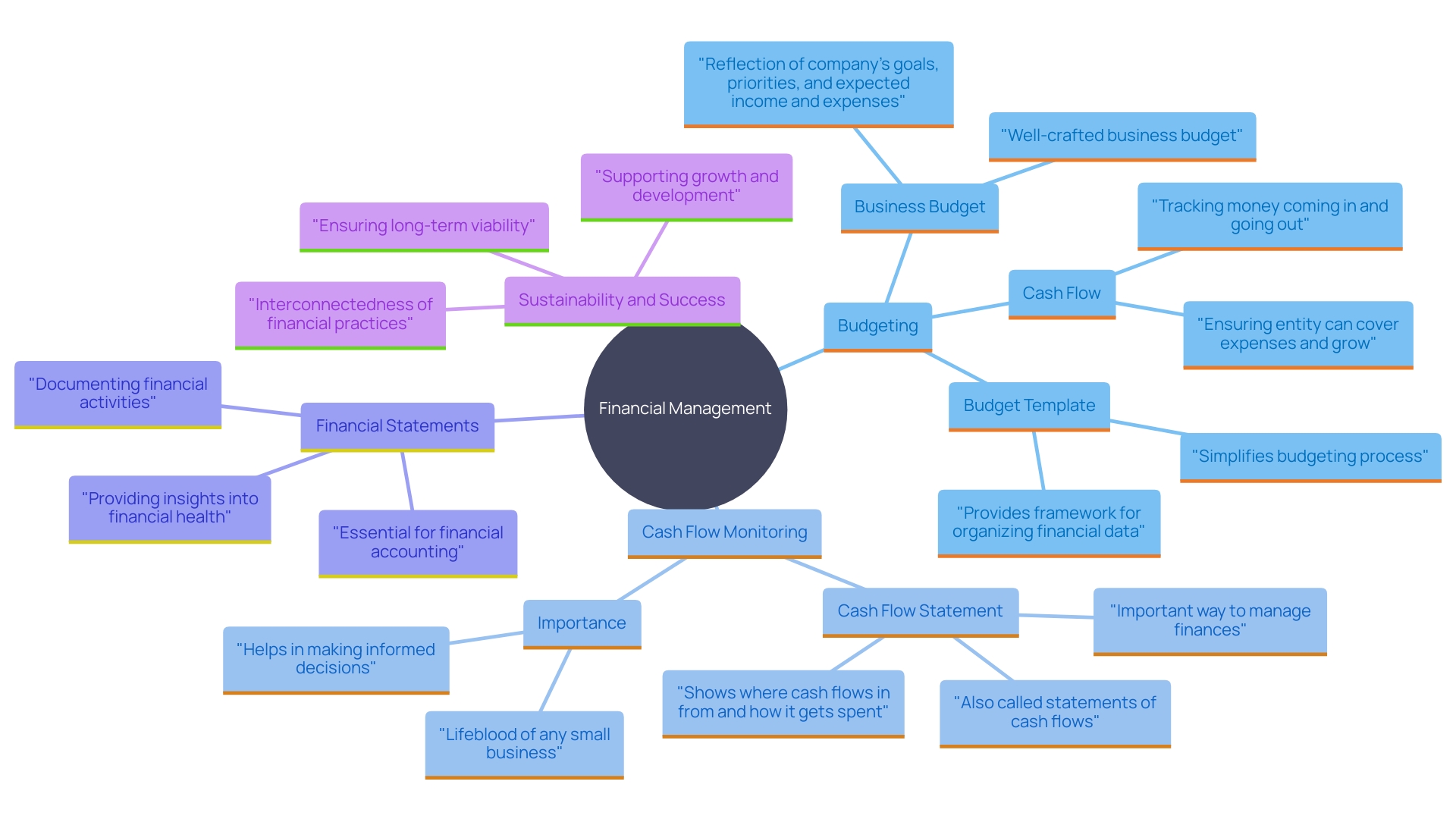
Enhancing Customer Engagement
Establishing significant relationships with clients is crucial for their loyalty and the expansion of your business. To achieve this, leverage various channels such as social media, email newsletters, and loyalty programs to keep patrons engaged. Personalize these interactions to meet individuals where they are, whether online or in person, and tailor your communication to their preferences. According to Elizabeth Tobey from NICE, it's crucial to 'meet your clients when and where they want to be met.'
Outstanding service to clients plays a pivotal role in fostering loyalty. A study emphasizes that 80% of clients believe that a company's experience is as essential as its products and services. Therefore, ensuring seamless communication across all touchpoints—be it online, over the phone, or through social media—is paramount. Actively seeking and integrating client feedback into your offerings can significantly enhance satisfaction and encourage repeat business.
Businesses are increasingly utilizing client data to personalize interactions and anticipate needs. This trend towards personalization and omnichannel engagement makes it easier to create a cohesive client experience. An example is Intuit, which plans to rehire 1,800 new employees in roles that interact with clients to better support them and drive growth.
Ultimately, a positive client experience at every level—from research to point of sale—is crucial. Companies that excel in this area see increased loyalty, improved brand perception, and higher revenue opportunities.
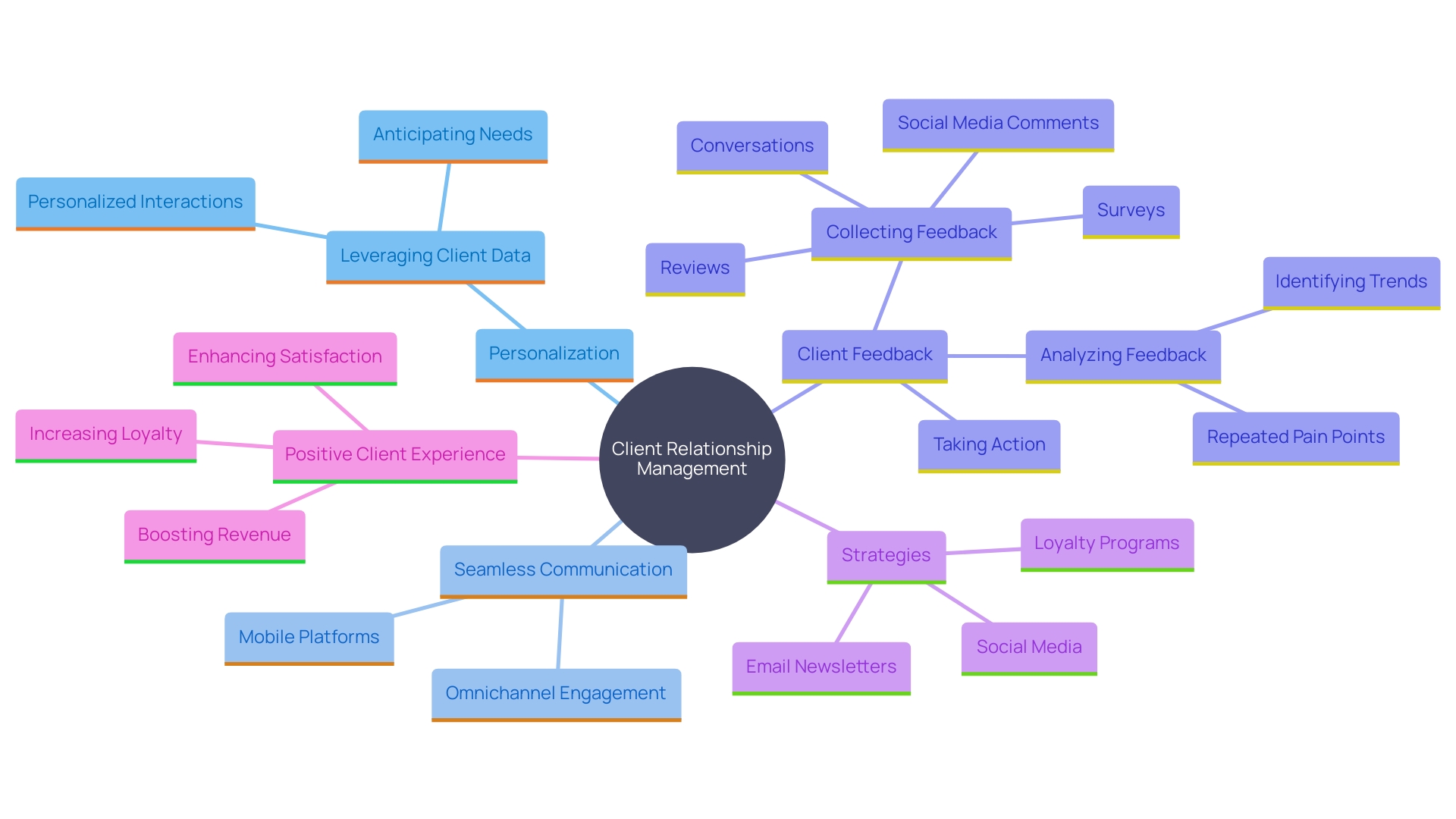
Measuring and Refining Growth Strategies
Routinely evaluate your growth strategies using key performance indicators (KPIs). Metrics such as customer acquisition costs, lifetime value, and sales growth are essential in measuring success. For instance, Pernod Ricard uses AI to connect profit margins and share, highlighting the need to view KPIs holistically. By examining these metrics, you can enhance and modify your strategies, ensuring they remain in tune with market trends and organizational objectives. As Fiona Tan, Wayfair's CTO, emphasizes, focusing solely on individual KPIs may benefit one part of the business but harm overall health. Therefore, regular assessment and adjustment based on comprehensive data are crucial for sustained growth.
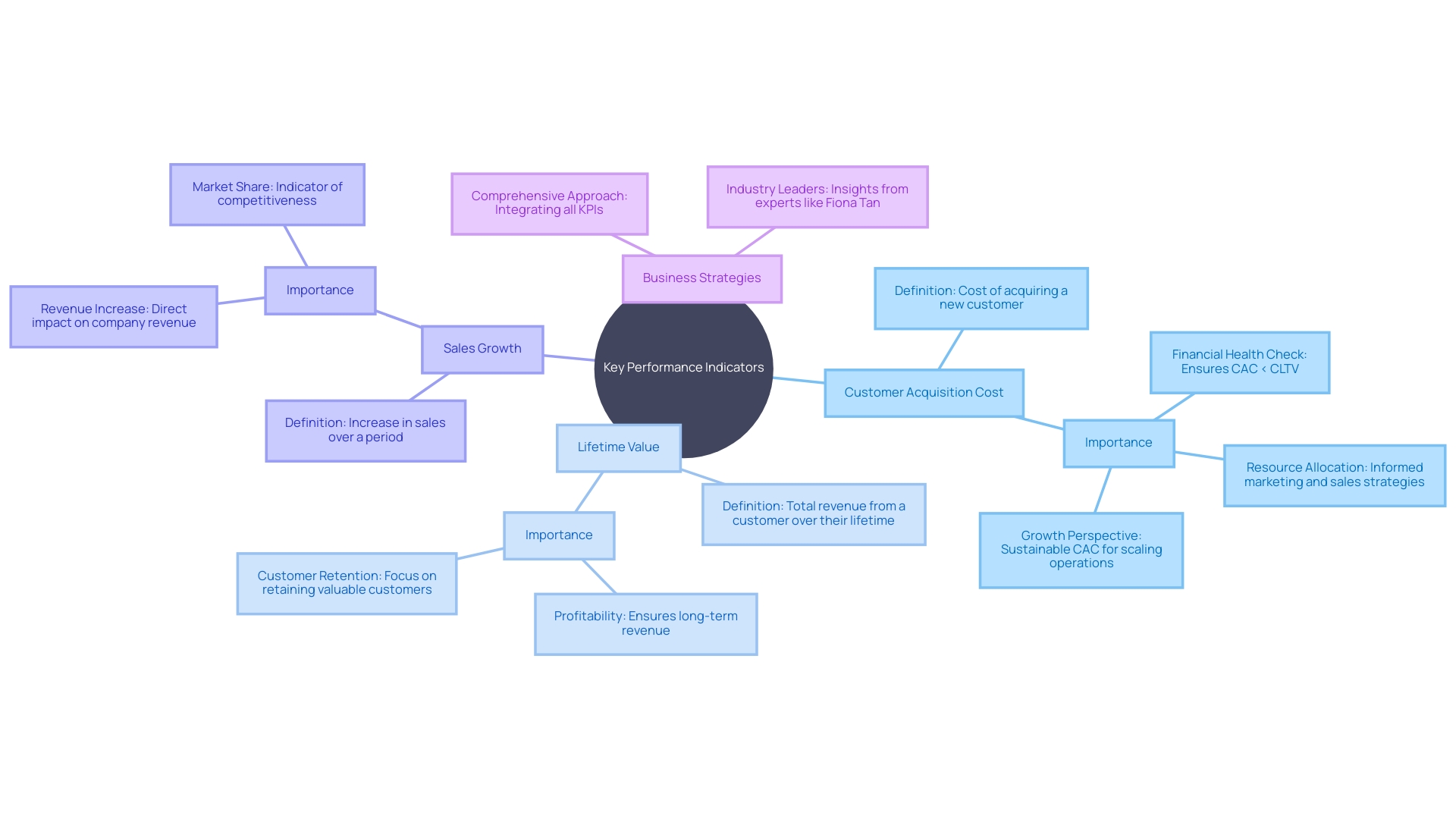
Conclusion
Achieving sustained growth in small businesses requires a comprehensive understanding of the market, strategic planning, sound financial management, enhanced customer engagement, and consistent evaluation of growth strategies. By conducting thorough market research, including surveys and focus groups, small business owners can gain valuable insights into customer preferences and behaviors. Leveraging AI tools can further streamline this process, allowing businesses to make informed decisions that resonate with their target audience.
Strategic planning is essential for setting measurable goals and utilizing tools like SWOT analysis to navigate both internal and external challenges. This informed approach enables businesses to capitalize on strengths and seize opportunities, ensuring they remain adaptable in a changing economic landscape.
Financial management serves as the foundation for sustainability. Implementing rigorous budgeting and utilizing financial software ensures accuracy in tracking cash flow, while regular reviews of financial statements help identify trends that can enhance profitability. By maintaining discipline in financial practices, small businesses can secure long-term success.
Customer engagement is pivotal for retention and growth. By personalizing interactions across various channels and providing exceptional customer service, businesses can foster loyalty and satisfaction. Actively seeking feedback and adapting offerings based on customer data enhances the overall experience, leading to increased revenue opportunities.
Finally, measuring and refining growth strategies through key performance indicators is crucial for maintaining alignment with market trends and business goals. Regular assessments ensure that strategies remain effective and responsive to evolving conditions. By embracing this multifaceted approach, small businesses are well-equipped to navigate challenges, seize opportunities, and achieve sustained growth.




